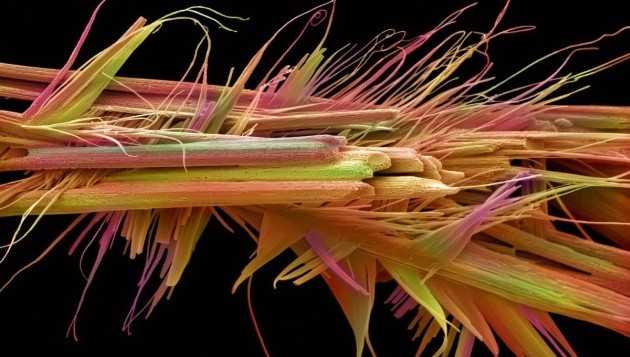Coffee aficionados in the United States are familiar with the intense locality behind a cup of the good stuff. “African coffees are … bright, engaging, and, okay, sexy,” brags a popular Portland-based coffee roaster’s website.
Meanwhile “Latin American coffees often present delicate and intricate flavors.” One group of experimental farmers, however, wants to add California to the list of quality coffee growing regions using a blend of traditional breeding and modern genetics to save the ever-popular plant, which is under siege in its traditional, tropical farming grounds.
Farmers at Good Land Organics near Santa Barbara are working in collaboration with scientists from the new Coffee Center at the University of California, Davis to figure out which variety of beans might be appropriate for them.
They have had the best luck with high-elevation Central American varieties; perhaps the latitude of Santa Barbara might compensate for its lower altitude.
Juan Medrano, at UC Davis, is analyzing the differences in gene expression between coffees grown at different altitudes, because the altitude at which the beans are grown affects the aroma and the flavor of a brewed cup of coffee.
Coffee is the second most traded commodity on the planet, surpassed only by oil. Yet the coffee supply is in peril; a study done at London’s Royal Botanic Gardens, Kew in 2012 estimated that two-thirds of coffee-growing regions in Africa could be destroyed by 2080, and wild Arabica (Coffea arabica, the best-loved species of coffee) could be extinct as soon as 2020.
The crop in South America, meanwhile, is being attacked on two fronts. A fungus commonly known as rust has been killing coffee trees in Central America since the 1970s, and droughts are killing the crop in Brazil.
Mudrano’s study of coffee genetics will certainly play a role here. A greater understanding of how an organism uses the genes at its disposal can be used to improve the flavor as well as the yield of a crop; a case in point is the strawberry, where identifying the genetic basis for the heirloom varieties’ succulence could help rescue the tasteless berries that are too often peddled to us modern folk.
There is also precedent for genetic analysis to help save beloved crops that may be in danger. This has already happened with papayas, which have been engineered to resist the ringspot virus that was attacking them where they grow in Hawaii – right near coffee plants.
It may also be the case with oranges; a bacterium that causes “citrus greening” has been decimating orange trees in Florida since 2005, and inserting a gene from spinach appears to be the only way to combat it.
Although California is not exactly tropical, it has some microclimates – like the coastal foothills of Santa Barbara at an elevation of 650 feet – that might meet coffee’s needs. Coffee and avocados are often grown together in Central America, and avocados have been successful in California – a good omen.
The state has a history as a nursery for exotic crops. Since the late 1800s, pioneers have planted dates from Morocco, navel oranges from Brazil, and avocadoes from Mexico and Guatemala. California now produces 80 percent of the world’s supply of almonds, which are native to the Middle East and South Asia.
With a bit of help from modern genetics, we’re bound to get an interesting yield from these efforts.
Even if California doesn’t make a dent in the world’s coffee demand soon, the crops grown there can be used for research into growing conditions and disease resistance; beyond beans, the crop may yield lessons that can be applied to coffee growing at large.
Diana Gitig


















